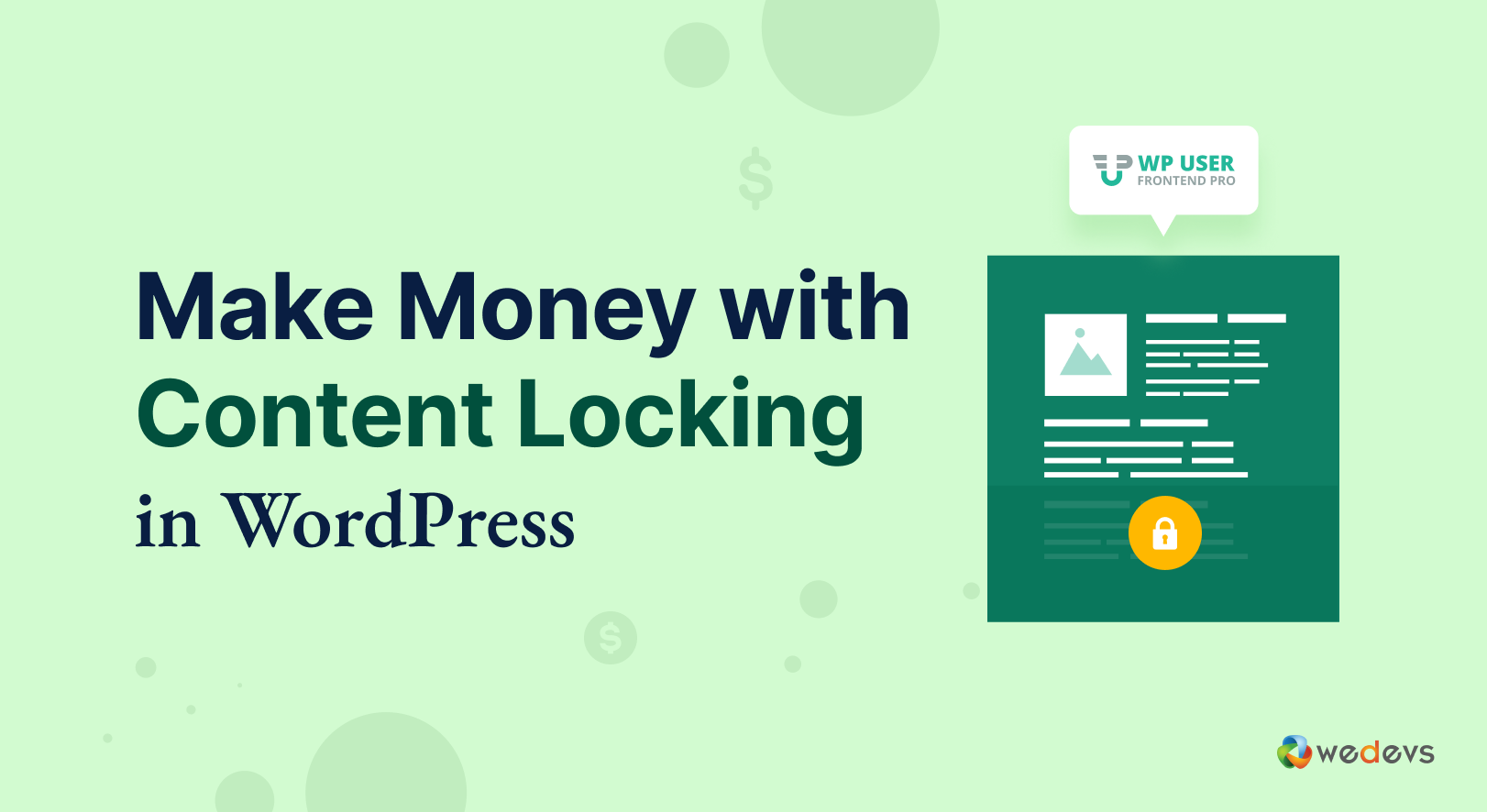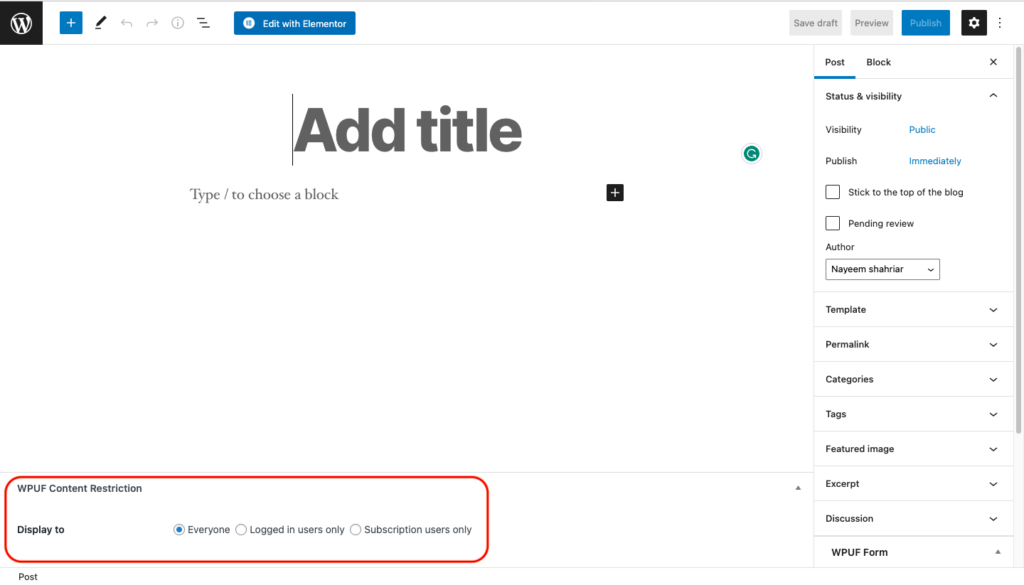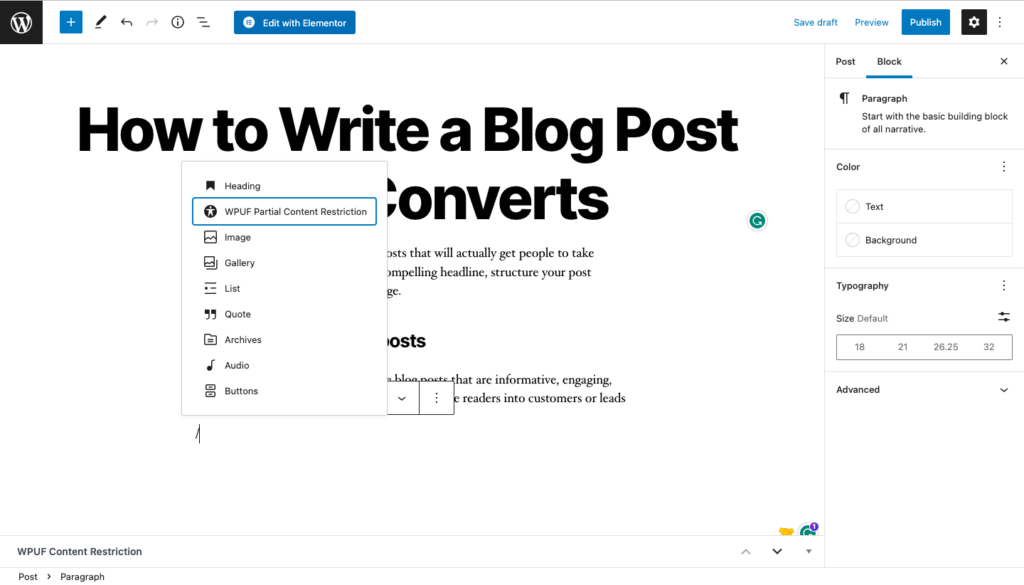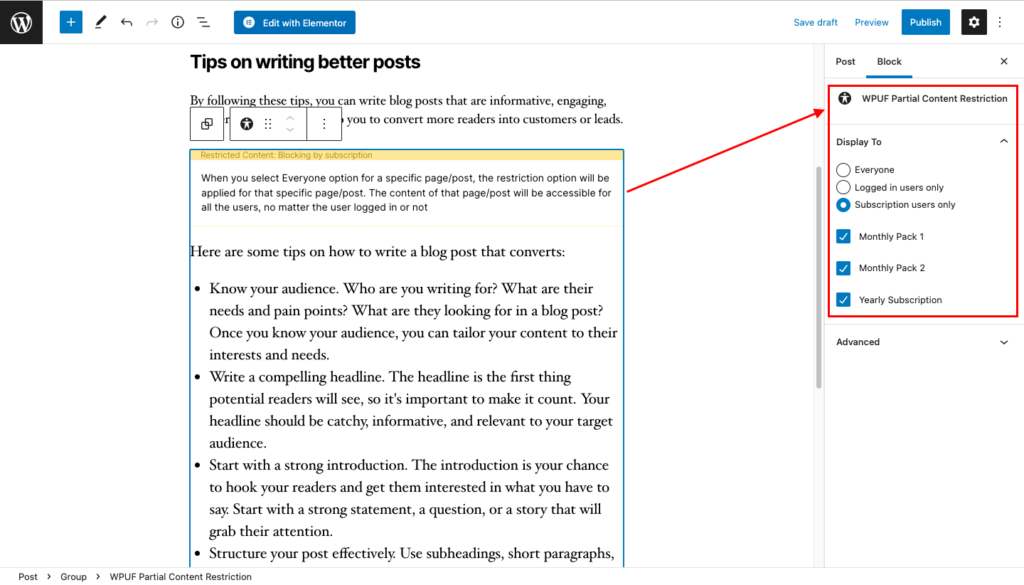
How to Make Money with Content Locking in WordPress
While scrolling a website, have you ever faced a paywall or at least a prompt to register (or log in)?
I believe you have, since many popular websites now practice this type of content-locking strategy. Where you can't consume their content without logging in, subscribing, or completing other intended actions.
In this article, we're going to show you how you can too utilize the content restriction policy on your WordPress site and earn from it.
What is Content Locking and How It Works?

Content locking or content restriction is a marketing strategy of restricting access to certain content until a user takes a desired action.
This action could be anything, like – signing up for a newsletter, watching an advertisement, completing a survey, sharing content on social media, etc.
If we break down the process, it stands like this:
(i) The user is presented with a barrier that prevents them from accessing the desired content immediately.
(ii)The user is then required to fulfill the specified action or provide the requested information.
(iii) Once a user completes the action, the content becomes accessible.
Here's an example of The New York Times content locking. If you start reading one of their articles, you will be seeing a Paywall like this –

Content locking can be an effective way to generate leads, increase engagement, and boost sales.
So, we can easily say from website owners to content publishers to advertisers – everyone can benefit from this strategy.
Pros and Cons of Using Content Locking in WordPress
Restricting access to content creates a sense of urgency and encourages users to act. As we've previously mentioned, it is a great way to generate leads and increase engagement.
However, it's important to remember, if you make unlocking your content too difficult or time-consuming, users might just move on to something else.
Let's have a look at the benefits and drawbacks of this system –
The primary benefits of content locking are –
- Generate leads: Content locking can be a great way to generate leads for your business. By requiring users to take action in order to access your content, you can collect their contact information and follow up with them later.
- Increase engagement: You can gain more engagement from the audience with your content using content restriction. When users have to take action in order to access your content, they're more likely to read it and interact with it.
- Improve SEO (Search Engine Optimization): Content locking can also help to improve your website's SEO. When users share your content on social media, it can help to drive traffic back to your website. This can help to improve your website's ranking in search engine results pages (SERPs).
- Monetize your content: You can set subscription or membership charges, advertisements, donations, or use other monetization methods to unlock your content. Make more money as a content creator.
Let's examine the drawbacks of content locking –
- Can be frustrating for users: If you make it too difficult or time-consuming for users to unlock your content, they may simply move on to something else.
- Can be seen as spammy: If you use content locking too often, it can be seen as spammy and off-putting to users.
- Can be difficult to track: It can be difficult to track the effectiveness of content locking. This is because it can be hard to determine how many users would have accessed your content if it wasn't locked.
Overall, for improving SEO, user engagement, and lead collection, content locking can be pretty helpful. But you should use it in a way that doesn't discomfort your users.
How to Utilize Content Locking in WordPress and Make Money

There are a few different ways to implement content locking. One common method is to use a pop-up that appears when a user tries to access the locked content. The pop-up will then ask the user to take the desired action in order to unlock the content.
Another method is to use a paywall. This is a system that requires users to pay a subscription fee in order to access certain content. As this article is all about this, let me show you how easily you can utilize this method in your WordPress website.
If you're familiar with the frontend post submission plugin – WP User Frontend, you probably already know that besides guest posting, the plugin offers a wide range of other features as well.
Posting forms, registration forms, profile builder, subscription management, content restriction, and more. So, with WP User Frontend, you can serve any and all of the purposes you need.
Now, let's see how the Content Restriction feature works and how to make the most of it.
WP User Frontend offers two different ways to lock your content –
1. You can hide the entire page or content. Or,
2. You can hide specified parts of the content.
1. Restrict the Entire Post or Page with WP User Frontend
If you have both WP User Frontend Free and Pro installed on your website, you can easily control access to a post or page with a few clicks. You'll find the content restriction option under the editor when editing or creating a new post or page.
By default, it's set to the ‘Display to Everyone' option. This means the particular post/page on the site will be visible to everyone from the front end. Change it to ‘Logged-in users only' or ‘Subscription users only' to make it available to specific users.

So, if you already have subscription packs created with WP User Frontend, they will show up here once you select the ‘Subscription users only' option. Tick all the boxes if you want to make this post available to all your paid users but no one else.
You can even make further restrictions by checking/unchecking the boxes to control which subscription pack users will be able to view and who won't.

For example, we've created three Subscription Plans and made our post available to two of them. As a result, except for members subscribed to those two plans, no one will be able to access this content.
2. Restrict Partial Content with WP User Frontend
Now, if you want to show some part of your article to everyone but make the rest of the part exclusively available to paid users only, you can do that too with WP User Frontend pretty easily.
Let's say we want to make the first two paragraphs of an article visible to everyone. But only the paid subscribers will be able to read the rest of the articles. Just like articles in IEEE, The New York Times, etc. right?
So, we write the first parts normally in the WordPress editor. Then to lock the exclusive parts, we'll need the ‘WPUF Partial Content Restriction' block. You should find it easily whenever you start a new block in the Gutenberg editor.

After selecting this block, the content you insert under it would be locked for specific users. You'll see the restriction controls in the right column.

As we want to show this to our paid users only, we've configured the ‘Display To' section from the right column accordingly. This ‘Display To' section has got the same settings and works the same way we discussed previously in the Entire Content Restriction section. Learn more about the partial content restriction feature.
So that's it, that's how easily you can monetize your website using the subscription model. Don't forget to share your thoughts with us in the comment section below. If you're already practicing this on your website, your experience can be a great help to others.
Before you Start Earning from Content Locking in WordPress
Making your content exclusive to earn from it is a popular and successful business model.
But will people become paid subscribers to read your articles? Of course, they will, but you need to maintain these –
- Ensure the exclusivity of your content. Your content should provide original or curated information. If readers can find the same information elsewhere for free, they won't be willing to pay for it.
- Your content should deliver something valuable to your audience. People are willing to pay for things that add value to their lives.
Be it educational, inspirational, or entertaining – as long as you provide your audience with what they’re interested in, they will love your content.
Therefore, promoting your content on social media platforms, YouTube, and through email marketing could be the game changer and drive a lot of traffic to your website.